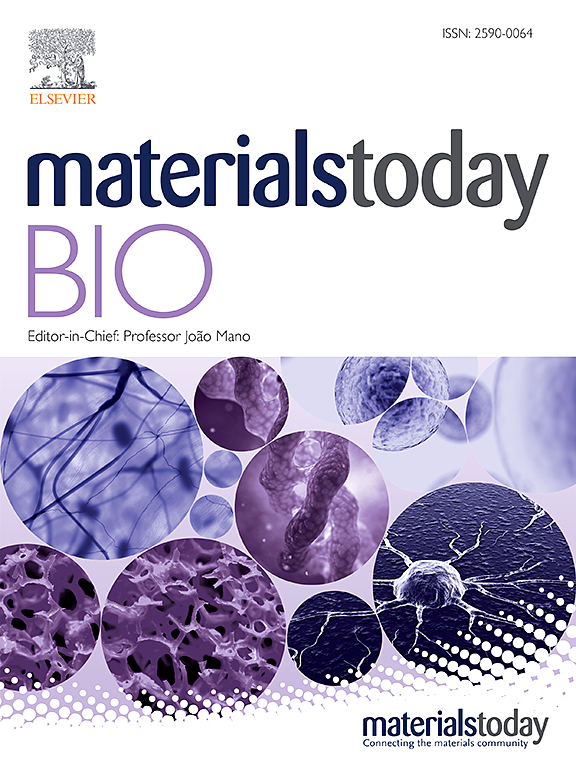W-GA nanodots with multienzyme activities alleviate the inflammatory microenvironment in the treatment of acute wounds
IF 8.7
1区 医学
Q1 ENGINEERING, BIOMEDICAL
引用次数: 0
Abstract
Acute wounds present a significant clinical challenge due to delayed healing, which is often exacerbated by elevated levels of reactive oxygen species (ROS). These high ROS concentrations hinder the natural healing process, leading to prolonged recovery and increased risk of complications. W-GA nanodots, synthesized via a simple coordination method, have emerged as promising solutions, demonstrating multifunctional enzymatic activity that effectively scavenges ROS. To explore the underlying mechanisms of ROS-induced oxidative stress, we conducted RNA sequencing on macrophages exposed to H2O2. The results revealed significant regulation of key stress response pathways, including substantial upregulation of the “p53 signaling pathway” and the “HIF-1 signaling pathway,” both of which are essential for cellular adaptation to oxidative stress. By alleviating oxidative stress, W-GA nanodots not only accelerate wound repair but also improve overall healing outcomes. Notably, RNA sequencing of animal tissue samples revealed that W-GA nanodots activate the “Wnt signaling pathway,” further promoting wound healing. These findings underscore the potential of W-GA nanodots as a novel therapeutic strategy for enhancing wound healing and treating oxidative stress-related conditions, positioning them as promising candidates for future clinical applications in wound care and inflammatory diseases.

求助全文
约1分钟内获得全文
求助全文
来源期刊

Materials Today Bio
Multiple-
CiteScore
8.30
自引率
4.90%
发文量
303
审稿时长
30 days
期刊介绍:
Materials Today Bio is a multidisciplinary journal that specializes in the intersection between biology and materials science, chemistry, physics, engineering, and medicine. It covers various aspects such as the design and assembly of new structures, their interaction with biological systems, functionalization, bioimaging, therapies, and diagnostics in healthcare. The journal aims to showcase the most significant advancements and discoveries in this field. As part of the Materials Today family, Materials Today Bio provides rigorous peer review, quick decision-making, and high visibility for authors. It is indexed in Scopus, PubMed Central, Emerging Sources, Citation Index (ESCI), and Directory of Open Access Journals (DOAJ).
 求助内容:
求助内容: 应助结果提醒方式:
应助结果提醒方式:


